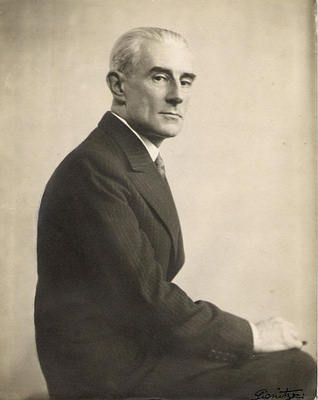"It is incontestable that music induces in us a sense of the infinite
and the contemplation of the invisible."
AUTHOR: Victor de La Prade
MEANING OF THE QUOTE:
“Music places the listener into whatever creative venture the mind
can dream up."
COMPOSER
RAVEL
Tzigane
Played by violinist Midori
Tzigane
Played by violinist Henryk Szeryng
Tzigane
Played by violinist Isaac Stern
Tzigane
Played by violinist Itzhak Perlman
Tzigane
Played by violinist David Oistrakh
Played by violinist Jascha Heifetz
http://imslp.org/wiki/Tzigane_(Ravel,_Maurice)
http://en.wikipedia.org/wiki/Tzigane
http://www.gotomidori.com/english/musicnote-200302/musicnote-07ravel.html
http://www.timsummers.org/?page_id=62
http://musimelange.com/?p=1044
http://bso.http.internapcdn.net/bso/images/program_notes/Ravel_Tzigane.pdf
http://www.lawrencebudmen.com/program_notes_concert_gluzman_feldman.html
http://www.anne-sophie-mutter.de/back-to-the-future-ravel.html?&L=1
http://www.cpr.org/article/Ravel_Tzigane
http://www.troychromatics.org/114season/pdfs/TCC114-2LaraStJohnProgram.pdf
Tzigane
From the article:
“Tzigane,” Concert Rhapsody for violin and orchestra
Program Notes
Maurice Ravel (1875-1937)
By MARC MANDEL
First performance (original version for violin and piano): April 26, 1924, London, Jelly d’Arányi, violin; Henri Gil-Marchex, piano-luthéal (see below).
First performance of orchestral version: November 30, 1924, Paris, Concerts Colonne, Gabriel Pierné cond., Jelly d’Arányi, soloist.
First BSO performance: February 26, 1925, Serge Koussevitzky cond., Paul Kochanski, soloist.
First Tanglewood performance: Tonight’s performance is the first by the BSO at Tanglewood, the orchestra’s most recent performances having been given in the 1979-80 season with Seiji Ozawa conducting and then concertmaster Joseph Silverstein as soloist, at Symphony Hall, Carnegie Hall, and eight other out-of-town locations on tour in the United States and Canada.
During one of Maurice Ravel’s visits to London, following a private musicale during which the Hungarian violinist Jelly d’Arányi
performed the composer’s recent Sonata for Violin and Cello with the cellist Hans Kindler, Ravel asked Mlle. d’Arányi—who was a grandniece of the famed Austro-Hungarian violinist-composer conductor-teacher Joseph Joachim—to play him some Gypsy melodies. This went on until five in the morning and presumably was the first event in the history of Ravel’s Tzigane for violin and orchestra. Ravel completed the Tzigane (which means “Gypsy”) just shortly before its premiere in April 1924; the orchestral version was given for the first time half a year later. On both these occasions, the soloist was Mlle. d’Arányi, who was dedicatee of the violin sonatas by Vaughan-Williams and Bartók as well as of the present work. It was also she who spurred the unearthing of Robert Schumann’s Violin Concerto in 1937 by claiming the composer’s spirit had visited her.
When it was new, a striking feature of Tzigane in its original violin-and-piano version was Ravel’s use of the recently devised piano-luthéal, a modified grand piano that allowed the player to alter the timbre of the instrument by employing harmonium-like stops set above the keyboard to produce a variety of sounds (lute- and harpsichord-like, as well as the normal timbre of the piano). One of these stops—fittingly, for Tzigane—created a sound similar to the Hungarian cimbalom, a hammered dulcimer whose use in that country is traceable back to the sixteenth century. Ravel also called for this instrument in his opera L’Enfant et les sortilèges (“The Child and the Magic Spells”), completed in 1925.
In any event, the first performance of Tzigane astounded both the composer and the audience, especially given the limited rehearsal time. Ravel’s ability to write for an instrument he had never studied also attracted notice. The reviewer for the London Times, however, was skeptical. Describing the piece as “rhapsodical in the literal meaning of the word, being a series of episodes in the Hungarian manner strung together,” he was “puzzled to understand what M. Ravel is at. Either the work is a parody of the Liszt-Hubay-Brahms-Joachim school of Hungarian violin music…or it is an attempt to get away from the limited sphere of his previous compositions to infuse into his work a little of the warm blood it needs.” Such commentary seems superfluous. Tzigane is, simply and straightforwardly, a virtuoso showpiece, opening with an extended “quasi cadenza” for the soloist and, along the way, using just about every violinist trick in the book.
MARC MANDEL
http://imslp.org/wiki/Tzigane_(Ravel,_Maurice)
http://en.wikipedia.org/wiki/Tzigane
http://www.gotomidori.com/english/musicnote-200302/musicnote-07ravel.html
http://www.timsummers.org/?page_id=62
http://musimelange.com/?p=1044
http://bso.http.internapcdn.net/bso/images/program_notes/Ravel_Tzigane.pdf
http://www.lawrencebudmen.com/program_notes_concert_gluzman_feldman.html
http://www.anne-sophie-mutter.de/back-to-the-future-ravel.html?&L=1
http://www.cpr.org/article/Ravel_Tzigane
http://www.troychromatics.org/114season/pdfs/TCC114-2LaraStJohnProgram.pdf
GENERAL MUSIC
01. VIOLIN LEFT PIZZICATO WARM-UP
02. OPEN STRING NOTE READING REVIEW
03. OPEN STRING SONGS PLAYED WITH LEFT PIZZICATO
........a. CRIPPLE CREEK
........b. BATMAN
04. VIOLIN RIGHT HAND PIZZICATO INTRODUCTION
........a. RIGHT HAND PIZZICATO IN GUITAR POSITION
........b. REPEAT RIGHT HAND PIZZICATO HAND POSITION HOLDING THE VIOLIN NORMALLY
OPEN STRING RIGHT HAND PIZZICATO SONGS TOMORROW
ADV. STRINGS
JUNE 5th 5:00 PM (4:30 CALL TIME) DEDICATION FOR PATRICK'S GARDEN
VOLUNTARY PARTICIPATION TO PLAY "STAIRWAY TO HEAVEN"
PRACTICED STAIRWAY TO HEAVEN FOR WEDNESDAY
VOLUNTARY PARTICIPATION TO PLAY "STAIRWAY TO HEAVEN"
PRACTICED STAIRWAY TO HEAVEN FOR WEDNESDAY
BEG. STRINGS
HOE DOWN (SPICCATO BOWING TECHNIQUE)
DISCUSSED SONGS FOR NEXT YEAR
HOE DOWN (SPICCATO BOWING TECHNIQUE)
DISCUSSED SONGS FOR NEXT YEAR


